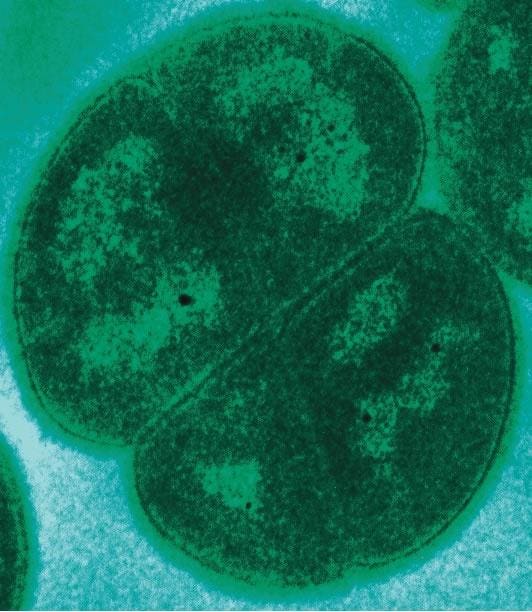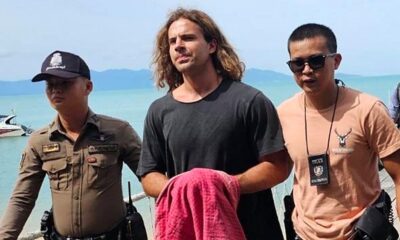Health
How resilient is life?

Transmission electron microgragh (TEM) of Deinococcus radiodurans
Resilience is a fundamental quality of life and has the remarkable ability to thrive in unexpected places. It’s no clearer than in Deinococcus radiodurans. When nuclear reactors were first put into operation, we were surprised to discover a peculiar microorganism thriving in the reactor’s cooling system. This persistent bacterium, later identified as D. radioduranswas previously found in an unlikely source: an irradiated can of meat.
Further investigation revealed a microbe with extraordinary resilience that can thrive in a radioactive inferno that makes Chernobyl look like a day at the beach. It can withstand radiation doses up to 1000 times greater than the lethal effects on most other organisms and microorganisms. Its resilience extends beyond radiation. D. radiodurans mocks dehydration, gapes at the vacuum of space and treats acid baths and salty environments like luxury spas.
The existence of such an extreme survivor begs the question: what lessons can we draw from this for life, medicine and biology?
Leveraging antioxidant strategies
Life is a controlled fire or burning process. The building blocks of existence are both fuel and forge. During this process, energy is released when molecules are broken down through oxidation. This involves creating and destroying free radicals, which are highly reactive forms of oxygen. Oxidative stress is a condition in which the balance between free radicals and antioxidants is disrupted. This oxidative process is an important part of ionizing radiation, which also releases these harmful free radicals. If left unchecked, these free radicals can wreak havoc on the things of life, leading to damage and disease.
The current health trend to consume as many antioxidants as possible raises questions about their effectiveness. Consuming antioxidants alone is not enough; they must be integrated into cells. Living in a challenging environment requires controlling the damage to DNA and other cellular elements by controlling the amount of free radicals and repairing the damage they cause. D. radiodurans not only survives the storm of free radicals; it thrives in it and employs an arsenal of antioxidant strategies to combat oxidative stress.
The antioxidant strategies of D. radiodurans provide valuable insights into potential applications for reducing oxidative stress in other organisms, including humans. Manganese is a crucial element of this oxidative defense. It supports enzymes that break down superoxide radicals into less harmful molecules, reducing oxidative stress. It also forms complexes with small molecules to neutralize reactive oxygen species before they cause damage. These manganese-antioxidant complexes are particularly effective in protecting proteins and DNA.
Can we adjust that for ourselves? That’s a challenge. We don’t know how yet, but maybe. We know it is possible; therefore we may be able to do it ourselves. By understanding and exploiting these mechanisms, there is hope to develop new approaches, such as antioxidant therapies and genetic engineering, to improve the antioxidant properties of human cells and effectively reduce oxidative stress.
DNA repair strategies
There is another lesson in it D. radiodurans‘unparalleled DNA repair capabilities. Imagine a library where books are constantly being torn apart. Yet a team of hyper-efficient librarians collects them perfectly, page by page, in minutes. That’s what happens in this bacterium.
DdrC clamp structure and the loaded mousetrap mechanism.
The genome, tightly arranged like a biological fortress, can repair hundreds of radiation-induced breaks without missing a beat. Recent insights from Western University have highlighted the role of a unique protein clamp in the DNA repair process. This protein, DdrC, is essential for identifying and stabilizing DNA breaks. This allows the bacterium to accurately piece together shattered genetic material. The repair process combines recombination and replication, allowing the bacterium’s genome to remain intact even after severe damage.
This achievement makes us sit up and take notice, and wonder again: can we adapt that for humans? Can we improve our cellular repair mechanisms, modify DNA repair enzymes or develop ultra-targeted therapies that leave healthy cells unharmed?
Preventing and repairing inevitable damage is the key to longevity
I discovered this during my early studies at Harvard Medical School DNA damage accumulates in cells as we age, mainly due to the constant attack of free radicals generated by normal cellular metabolism. These highly reactive molecules can cause a variety of lesions in DNAincluding basic modifications, single-strand breaks and the particularly dangerous double-strand breaks.
Over time, this damage can lead to mutations that disrupt normal cell function contribute to the development of cancer and other age-related disorders. Cells from older individuals show a marked decrease in their ability to repair DNA damage compared to cells from younger individuals. This decrease in repair capacity creates a vicious circle. As we age, our cells accumulate more damage, while at the same time losing their ability to repair it.
The ability to survive and repair damage is essential for longevity. In fact, this ability is how plant life has thrived for centuries. Consider the ancient bristlecone pine forest with its gnarled guardians, some of which have stood guard for more than 5,000 years. These tree-dwelling ancestors have an arsenal to withstand time. Their efficient DNA repair mechanisms, honed over countless generations, allow them to weather the storms of time with grace and tenacity.
The accumulation of cellular damage that leads to aging is not an immutable law of nature. It is a challenge that life has encountered and overcome over and over again in countless forms. The efficient DNA repair and protein protection mechanisms observed in Deinococcus radiodurans are an example of life overcoming cellular damage to thrive in the most unlikely places.
The versatility of life, exemplified by these long-lived organisms, provides inspiration for human health and longevity. By unraveling the molecular mysteries of these natural wonders, we can unlock new pathways to boost our own resilience. Imagine a future where human cells can repair DNA with the efficiency of a bristle brush or neutralize free radicals with the finesse of D. radiodurans.
In this grand quest to expand the quality and quantity of human life, we find ourselves as students of the oldest and most accomplished teacher of all: life itself. As we delve deeper into the secrets of these resilient organisms, we may discover that the key to unlocking our own potential for longevity and vitality has been written in the language of life all along, waiting for us to learn how to use it. must read.
To learn more about regenerative medicine, read more stories at www.williamhaseltine.com













